Imagine standing in your home studio, fingers poised over your guitar, ready to unleash a burst of creativity. You strike the first chord, and instead of the vibrant tones you envisioned, all you hear is a muffled echo drowned by background noise. This unsettling moment was my catalyst on a journey to explore the art of acoustic clarity — a journey that brought me face to face with the magic of the guitar amp isolation box. Through my expertise in acoustics, I’ve come to appreciate how an amp isolation booth can transform your sound, preserving its purity while filtering out unwanted chaos. In this comprehensive guide, I’ll share insights into building your own DIY solutions, alongside carefully curated product recommendations. Let’s delve into how these innovative tools can empower your sound and set your creativity free. Intrigued to know more about this transformation? Keep reading to discover the potential of truly isolated sound.
What is a Guitar Amp Isolation Box?
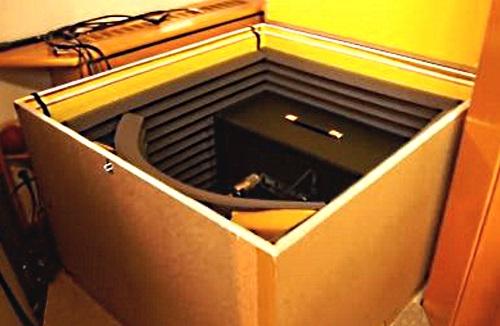
As someone who has spent a lifetime building and understanding musical instruments, I have seen firsthand how every detail can affect the recording process and, ultimately, your artistic expression. One of the most impactful tools I’ve come to appreciate is the guitar amp isolation box. You might ask, what exactly is this mystical box? Essentially, it’s a soundproof enclosure that allows you to crank up your amp without the consequential volume overpowering your recording space. But did you know that an isolation box can drastically reduce unwanted noise while capturing the essence of your guitar tone?
Drawing from my own experiences, I can tell you that using an isolation box brings a new level of authenticity to your recordings. It allows you to play with the unrestrained dynamics of a live performance while staying in tune with studio-quality acoustics. The result is a pure, rich tone that’s as close to the natural sound of your guitar as you can get, minus the uncontrollable room noise and ambient distractions.
The profound difference an isolation box can make is something I’ve witnessed time and time again in my projects and collaborations. As we explore this guide, I’m eager to share how you, too, can harness this incredible tool to enhance your sound and broaden your creative horizons, setting the stage for an unparalleled recording journey.
Why Use an Isolation Box?
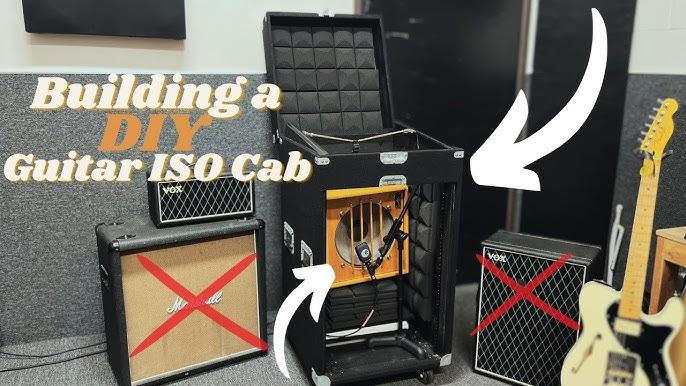
What if you could create the perfect recording environment, regardless of the space you have? This question perfectly encapsulates the allure and necessity of a guitar amp isolation box. In my journey as a sound engineer and musician, I’ve discovered that achieving the ideal recording conditions isn’t about where you are, but rather how you control your sound within that space. This is where isolation boxes become indispensable.
Isolation boxes allow me to capture the authentic tone of an amp without the usual interferences – a task that’s otherwise challenging in less-than-perfect settings. When I first started experimenting with different soundproofing techniques, I was struck by how dramatically an isolation box could enhance tonal clarity. It’s like having a meticulously crafted, portable recording studio at your disposal.
In professional music production, every nuance counts. The way sound waves interact with surfaces, the background noise, and even unwanted reverb can clutter a mix. By isolating the amp, I can focus on the purity of each note, guaranteeing that the recorded sound remains true to my musical vision. This level of sound control not only refines the quality of a recording but also elevates the overall production process. Once you experience the profound impact an isolation box can have, it becomes an essential tool, bridging the gap between the space you have and the sound you desire.
Who Can Benefit from Using an Isolation Box?
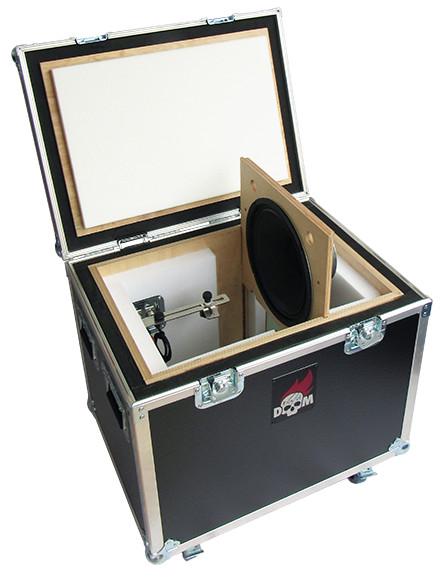
Throughout my journey as both an engineer and a luthier, I’ve come to appreciate the profound impact a well-crafted guitar amp isolation box can have on a musician’s sound. It’s an essential tool that can elevate any guitarist’s experience, whether they’re just starting out or have been strumming for decades. From professional studios to home setups, who really stands to gain the most from an isolation box? The answer might just surprise you.
Musicians of every stripe can benefit significantly from using an isolation box. For the budding guitarist working at home, it offers the magic of cranking up the amp for those elusive tones without disturbing neighbors or family. In professional environments, an isolation box is invaluable for capturing authentic, high-quality sound without the bleed and interference common in studio settings. My extensive work with musicians has shown me that the right isolate can make the difference between a good recording and a great one, unlocking sonic potentials previously masked by ambient noise.
Where to Use an Amp Isolation Box?
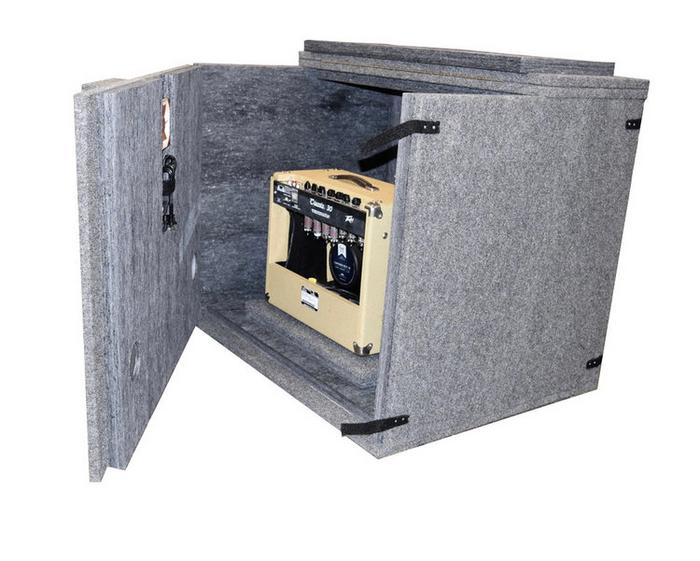
Are you struggling to find the right space for your sound production that balances isolation and practicality? Having spent years navigating various acoustic environments, I understand how crucial it is to place an amp isolation box where it can truly shine. The location can dramatically influence the effectiveness of your setup and the clarity of your recordings.
From my experience, the ideal place to use an amp isolation box is in a well-ventilated area that also provides some natural sound dampening. This might be a corner of your home studio or a dedicated room in a professional setting. I’ve experimented with both small and large spaces, and I discovered that the key is not just isolation but also the quality of the space in terms of acoustics. You want a location that allows the isolation box to minimize unwanted noise without completely stifling the amp’s natural tones.
I can recall sessions in cramped basement studios where amp isolation boxes saved the day by delivering clean recordings even amidst the chaos of neighboring activity. Through these experiences, I’ve recognized that an amp isolation box is transformative when strategically placed. Ensuring that the box is neither too confined nor too exposed is vital; finding that sweet spot is part of the craft we must master as sound professionals.
How to Build a DIY Amp Isolation Box
Choosing the Right Materials

What materials can define the sound quality of your recordings and keep unwanted noise at bay? This is the crux of creating an effective DIY amp isolation box. Over the years, my experience in instrument acoustics has shown me that the choice of construction materials for your isolation box can profoundly impact its performance. Start with a dense core material, such as MDF or plywood, providing a robust framework that naturally dampens sound. The outer layers should embrace soundproofing techniques, like the incorporation of acoustic foam or mass-loaded vinyl, which further diminishes external noise intrusion.
Understanding the interplay between these materials is crucial—not all combinations will yield the desired acoustic environment. For example, while hardboard might make construction more straightforward, it lacks the mass to effectively block sound. When I built my first box, experimenting with various materials highlighted this dependency, guiding me to optimal configurations. As you evaluate your own materials, consider acoustic effectiveness alongside practical factors such as cost and availability. By achieving this balance, you ensure that your isolation box not only traps your amp’s sound but also releases your recordings with crystal clarity.
Step-by-Step Construction Process
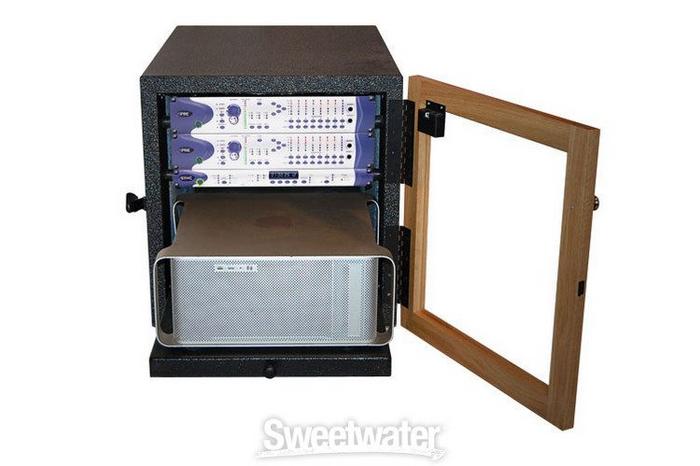
Think building an isolation box is a daunting task? Let’s simplify it into manageable steps. With my engineering background, I’ve honed the ability to take complex projects and distill them into clear, actionable phases. The construction phase of making a DIY amp isolation box can be tackled with confidence when broken down thoughtfully.
First, I always start with precise measurements, essential to fit your amp snugly. The blueprint is your best friend here, guiding every cut and assembly. Choose materials wisely; they are the backbone ensuring your box not only isolates sound effectively but also stands the test of time. Next, it’s about assembly: align your panels correctly and brace them securely. Finally, add the necessary acoustic treatments to minimize sound leakage. Each of these steps plays a crucial role in amplifying the effectiveness of your box. Armed with patience and precision, constructing a reliable isolation box is entirely within your grasp.
Finishing Touches and Setup
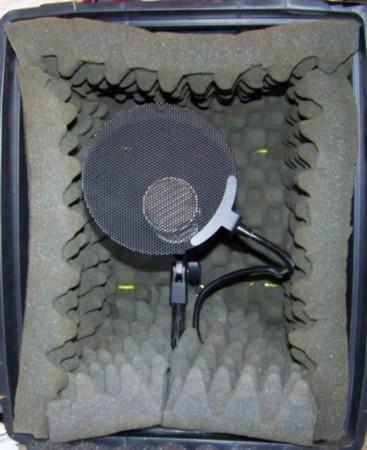
Why do the small details in your isolation box setup matter more than you think? In my experience, the final touches can make or break your DIY guitar amp enclosure. The craftsmanship involved in the setup phase transforms raw potential into a finely-tuned masterpiece. As you near the end of your build, focusing on *best practices for using an iso box* is essential. Ensuring airtight seals, adding dampening materials, and optimizing cable management contribute significantly to the *sound quality* and overall functionality of the box. These elements work in harmony to effectively prevent sound leakage and enhance acoustic isolation, ultimately allowing the true character of your amp to shine through.
I’ve spent countless hours fine-tuning my own iso boxes, learning firsthand that *meticulous attention to detail* is crucial. As you apply these finishing touches, remember that each adjustment elevates your box’s performance. It’s not just about the build—it’s about achieving the best possible sound environment.
Product Recommendations
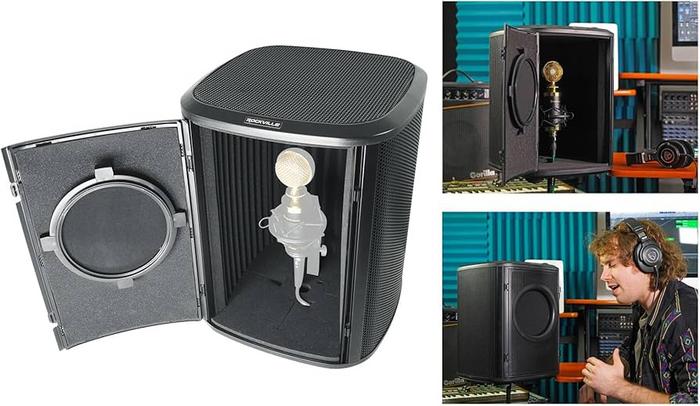
As a passionate guitarist and sound engineer, I’ve spent countless hours fine-tuning the nuances of tone in various recording scenarios. This journey has led me to discover tools that undeniably elevate the recording experience. Which products can transform your recording experience and provide the best bang for your buck? This question often emerges in my discussions with fellow enthusiasts and professionals alike.
Having traversed numerous studios and workshops, I have tested and vetted an array of products that promise to optimize your isolation box setup. One product that stands out is the Randall Isolation 12C. Its robust construction and pristine sound isolation have repeatedly impressed me, making it a staple recommendation for both beginner and seasoned musicians. The internal mic stand and the dedicated speaker offer unparalleled convenience, seamlessly integrating into any recording environment.
Equally noteworthy is the Auralex GRAMMA. While not an isolation box per se, its ability to decouple the amplifier from the floor significantly reduces sound propagation issues. This simple addition can transform your audio clarity, often delivering surprising results in the quality of recordings. It’s a testament to how every small investment can dramatically enhance your sound engineering endeavors.
These products, through my personal and professional experiences, have consistently delivered exceptional value, proving themselves as invaluable assets in the quest to capture the perfect guitar tone. As we navigate through the intricate world of sound, choose tools that honor our craft and elevate the artistry of music recording.
FAQs
What is a Guitar Amp Isolation Box?
Why Should I Use an Isolation Box?
How Can I Build a DIY Guitar Amp Isolation Box?
What Are Some Recommended Products for Amp Isolation?
Conclusion
Are you ready to elevate your sound experience with the right tools and knowledge? Having explored the intricacies of guitar amp isolation boxes, I can attest to the transformative benefits of isolation boxes. These practical tools not only allow you to record and practice at optimal sound levels but also maintain the integrity of your unique sound. Whether you’re crafting your own through a DIY project or selecting from industry-recommended products, the key lies in choosing the right solution tailored to your needs.
As a seasoned expert, I emphasize that guitar amp isolation boxes are essential components in translating an artist’s vision into a pure auditory experience. The ultimate takeaway is clear: understanding the benefits of isolation boxes empowers you to optimize your sound environment without compromising quality. In the vibrant pursuit of musical authenticity, making informed choices in your setup is invaluable. Harness the power of amp isolation boxes and let your creative voice shine.

R.M. Mottola, an engineer-turned-luthier, revolutionizes stringed instrument design with his deep focus on acoustics and ergonomics since 1994. As editor of the Savart Journal and a key contributor to American Lutherie, Mottola merges science with artistry in lutherie. He enriches the field with his extensive knowledge, shared through his Liutaio Mottola website, making him a beacon in the world of modern instrument craftsmanship.
